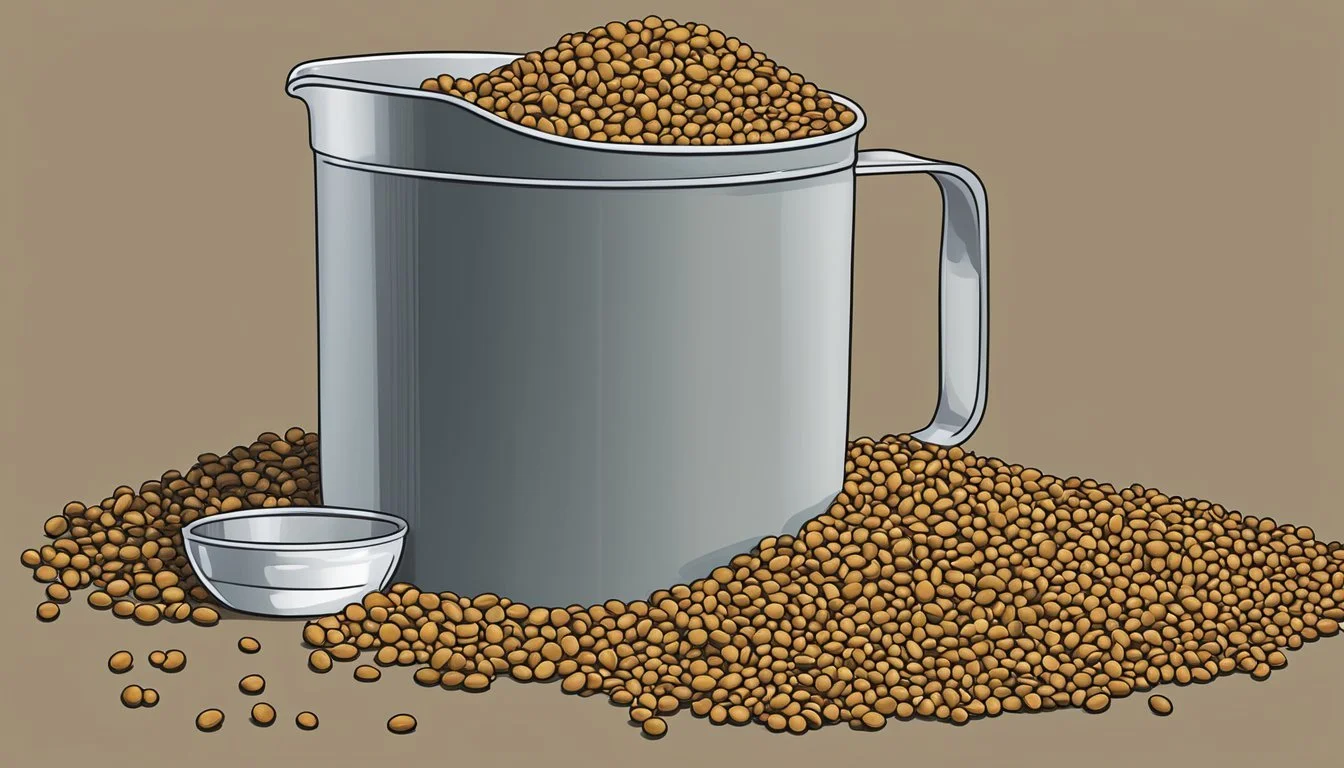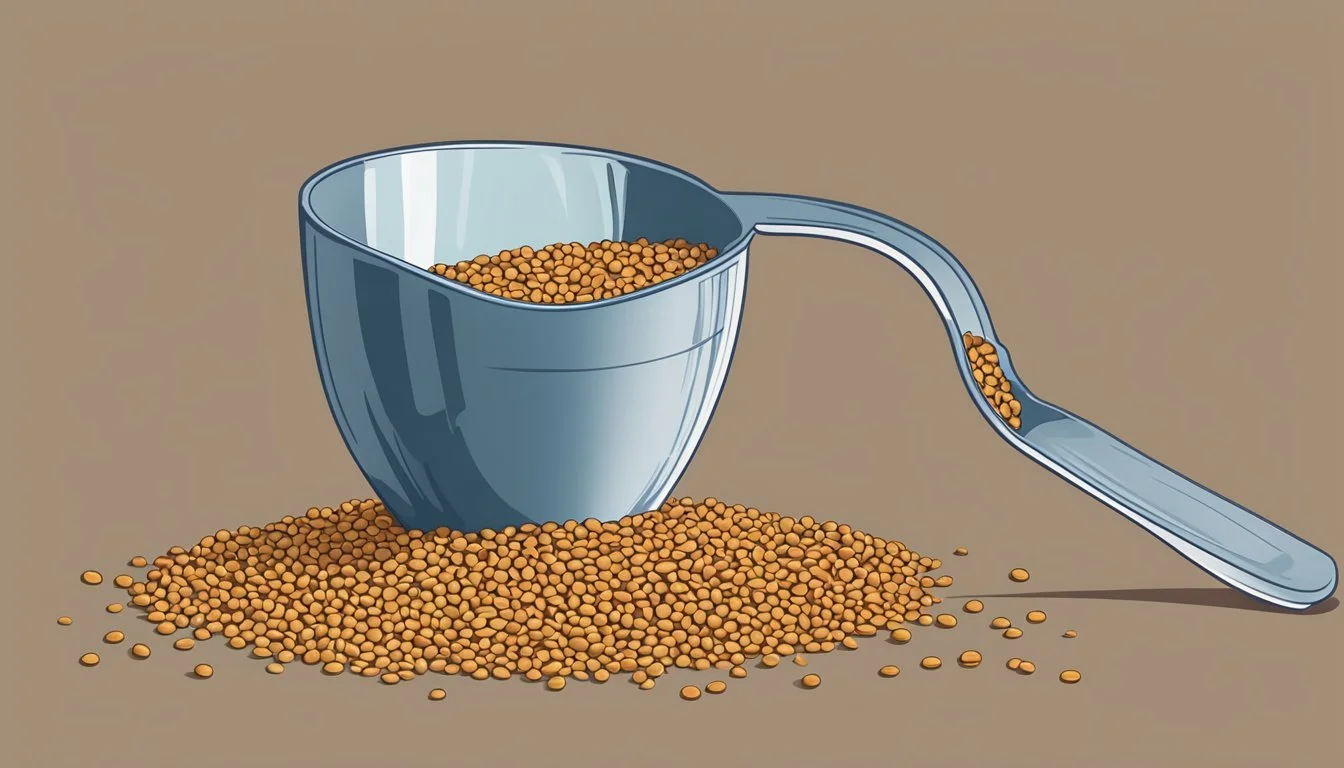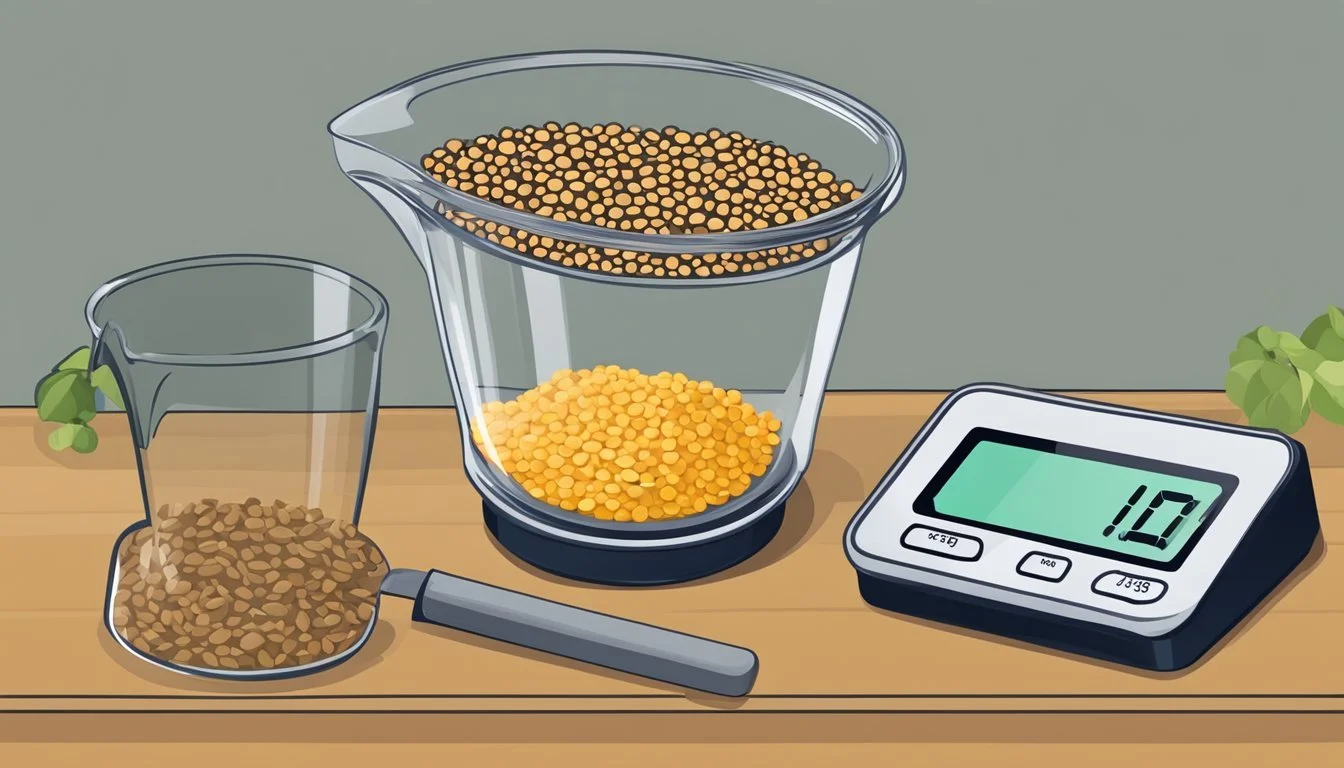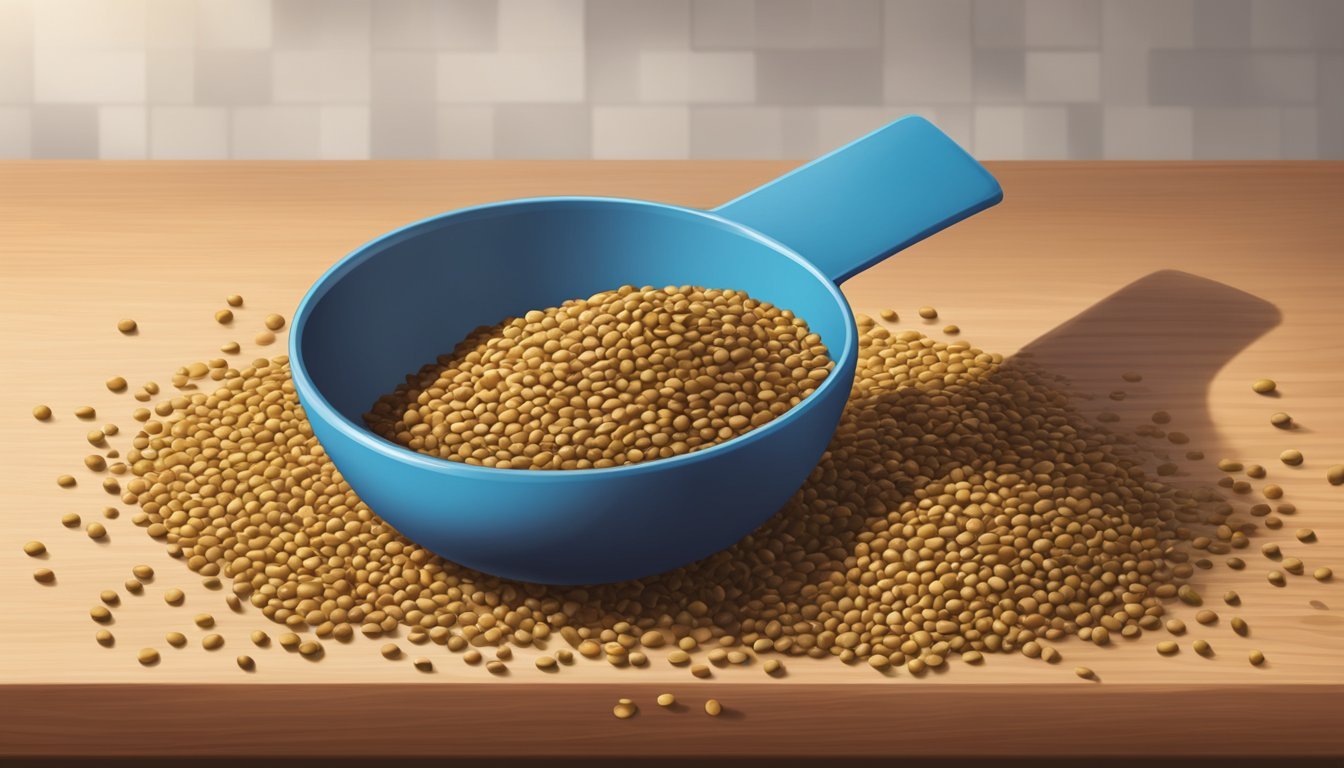How Many Cups in a Pound of Dry Lentils?
Measuring Guide Explained: 1 Pound of Lentils in Cups
Understanding the conversion of dry lentils from pounds to cups is essential for culinary accuracy. When measuring out ingredients for recipes, particularly those that involve pulses like lentils, precision is key. A standard conversion used in cooking is that one pound of dry lentils typically equates to approximately two to two and a half cups. This can vary slightly depending on the specific type of lentil and how densely they are packed.
Different varieties of lentils may also have distinct conversion rates. For instance, brown lentils and green lentils usually measure around two to two and a quarter cups per pound. In contrast, red lentils, which are often smaller and split, might yield closer to two and a half cups per pound. The expansion of lentils when cooked is another consideration; they significantly increase in volume, so understanding the correct dry measure is crucial to achieving the intended results in a dish.
Lentil Basics
Lentils provide a powerhouse of nutrition with beneficial protein and fiber while catering to various dietary needs, including vegetarian and gluten-free diets. They come in multiple types and varieties, each with distinct characteristics and uses.
Nutritional Profile
Lentils stand out in the legume family for their high protein content, making them a staple in vegetarian and vegan diets as a substantial plant-based protein source. They are also rich in dietary fiber, which aids in digestion and promotes a feeling of satiety. Aside from these macronutrients, lentils are a good source of iron, essential for transporting oxygen in the blood. They are packed with vitamins and minerals, contributing to their overall high nutritional value.
Types and Varieties
Lentils are categorized by their color, each with a unique texture and cooking time.
Green Lentils: These maintain their firm texture after cooking and have a slightly peppery flavor. They are suitable for salads and side dishes.
Brown Lentils: A versatile variety that becomes tender when cooked and is commonly used in soups and stews.
Red Lentils: These cook quickly and tend to become mushy, making them perfect for Indian dals and purees.
Black Lentils: Also known as "Beluga lentils," they resemble caviar when cooked, hold their shape well, and have a rich, earthy flavor.
By understanding these basic types, cooks can select the appropriate lentil for their dish, considering not just the taste and texture desired but also the impressive nutritional benefits lentils bring to the table.
Measurement Fundamentals
When converting between different units of measurement, one must understand the basic principles of weight and volume. Weight is a measure of how heavy an object is, usually recorded in pounds (lbs) or grams (g). Volume, on the other hand, measures the space an object takes up and is often recorded in cups, tablespoons (tbsp), or teaspoons (tsp).
For cooking ingredients like dry lentils, precision is important. One pound (16 ounces or 453.59 grams) of dry lentils typically translates to about 2 US cups. However, this is an approximate conversion as the actual volume can vary slightly with the type and size of the lentils.
Here is a simplified conversion chart:
1 lb of dry lentils → ~2 US cups
16 ounces of dry lentils → ~2 US cups
453.59 grams of dry lentils → ~2 US cups
A mass measurement converter may be used for more precise conversions, especially when fractional values come into play. It's vital to recognize that these measurements are for dry lentils, and they will expand upon cooking, which is important for recipe accuracy.
In summary, when converting from mass measurement to volume, the unit of cups provides a practical measure for recipe use, with the understanding that these conversions are close approximations.
Conversion Guide
When measuring lentils for cooking or baking, accuracy in converting weight to volume is essential. Lentils are commonly sold by weight, but many recipes call for volume measures. It's important to understand how to convert between these two.
1 pound of dry lentils typically equates to approximately 2 to 2.5 cups. This range accounts for slight variations among the different types of lentils. The more precise the type is specified, the more accurate the conversion will be:
Green lentils: about 2 cups per pound.
Brown lentils: about 2.25 cups per pound.
Red lentils: about 2.5 cups per pound.
It's useful to note that lentils expand when cooked; hence, a cup of dry lentils will yield more once they've been prepared. For recipes requiring precise ingredient measurements, it's advisable to measure lentils by weight.
Here's a simple reference table for dry to cup conversion:
0.1 lb → 0.25 cup
0.2 lb → 0.5 cup
0.3 lb → 0.75 cup
0.4 lb → 1 cup
0.5 lb → 1.25 cups
1 lb → 2 to 2.5 cups
These measurements are for dry lentils and can be used as a guide when preparing ingredients. The food conversion from pounds to cups should maintain the integrity of recipes and provide consistent results. Knowing these conversions helps ensure that dishes turn out as intended, with the correct texture and flavor profile.
Preparation Techniques
When preparing dry lentils, the cook begins by sorting and removing any debris or shriveled lentils. This is an essential step to ensure that only the best quality lentils are cooked, which contributes to their flavor and overall dish quality.
Next, the lentils must be thoroughly rinsed under running water. This cleaning process helps to remove any residual dirt or dust that may have settled during packaging or transport. Unlike some other legumes, lentils typically do not require soaking before cooking, which can save time in the kitchen. Soaking is only necessary if the goal is to reduce cooking time or if one plans to sprout the lentils.
Lentils have a considerable shelf life and can be stored in a cool, dry place for up to a year. However, older lentils may take longer to cook. Cooking methods can vary, but a standard approach involves combining 1 cup of dried lentils with 3 cups of liquid (water, broth, etc.). Seasonings like garlic or bay leaves may be added to enhance flavor, but salt should be added after cooking to prevent the lentils from becoming tough.
Here's a simple guide on how to cook lentils:
Rinse: Clean lentils under cold water.
Boil: In a pot, combine the rinsed lentils with liquid using a 1:3 ratio (1 cup lentils to 3 cups liquid).
Season: Add desired aromatics for flavor.
Simmer: Cook the lentils on low heat until tender, approximately 20-30 minutes for green, brown, and black varieties, and 8-9 minutes for red and yellow varieties.
Cooked lentils should be tender and have absorbed most of the cooking liquid. They do not require extensive preparation and offer versatility across various dishes, from salads to soups.
Cooking and Usage
Cooking with lentils is a versatile experience as they can be incorporated into a wide range of dishes. Lentils are a staple in recipes such as soups, stews, salads, and side dishes, providing a hearty base that complements many flavors. The cooking process is straightforward and does not require soaking, unlike other legumes.
To cook lentils, one simply brings a pot of water to a boil, adds the lentils, and lets them simmer until tender, typically 15 to 30 minutes depending on the lentil variety. It's important to avoid overcooking, as lentils can quickly turn from firm to mushy.
Flavor Pairing: Lentils have a mild, earthy flavor that pairs well with robust seasonings. Incorporating herbs and spices such as garlic, bay leaf, cumin, or coriander can elevate the taste. Adding a bay leaf to the cooking water is a traditional method to infuse subtle flavor.
Recommended Seasonings:
Garlic: Mince and add to lentils for a pungent kick.
Bay Leaf: Simmer with lentils for an aromatic flavor.
Herbs: Rosemary, thyme, and oregano for an herbal note.
Serving Suggestions: Lentils serve as an excellent side dish to meats and vegetables. They can also stand alone as the main component in vegetarian and vegan meals, absorbing the flavors of accompanying ingredients.
Soups – Base or thickener
Stews – Hearty ingredient
Salads – Protein-packed add-in
Side dishes – Flavor-enhancing base
In summary, lentils are a healthy, flavorful, and integral part of many recipes. They easily take on the flavors of the seasonings they are cooked with, making them a versatile ingredient in a cook's pantry.
Common Questions and Tips
When measuring lentils, the key is to achieve accuracy for desired results in cooking. Different types of lentils may yield varying cup measurements per pound.
Handling FAQs
Q: How many cups are in a pound of dry lentils?
A: One pound of dry lentils generally equates to approximately 2 to 2.5 cups.
Green lentils: ~2 cups per pound
Brown lentils: ~2.25 cups per pound
Red lentils: ~2.5 cups per pound
Q: Does the conversion change after cooking?
A: Yes, lentils expand when cooked; thus, the volume increases.
Disclaimer: Keep in mind these are approximate conversions and can vary due to factors like humidity and temperature.
Tips for Best Results
Consistency: To avoid measurement errors, always use the same measuring cup for both dry and wet ingredients.
Storage: Store lentils in a cool, dry place to prevent them from absorbing moisture which can affect the cup measurement.
Freezing: Lentils can be frozen post-cooking to maintain quality and consistency for dishes like lentil soup or salad.
Temperature: Measure lentils at room temperature – hot or cold lentils can clump, leading to measurement errors.
Humidity: In humid climates, lentils might absorb moisture from the air; it's advisable to measure immediately after taking them out of storage.
By adhering to these guidelines, one can ensure that their lentil-based dishes, whether it's a hearty soup or a refreshing salad, are made with the right proportions for a delicious meal.
Healthy Eating
When considering healthy dietary choices, lentils serve as a highly nutritious option. They are low in calories and fat, making them an ideal part of a weight-conscious diet. Lentils offer a wealth of nutrients that are beneficial for maintaining overall health. Importantly, they are a rich source of protein, which is crucial for muscle repair and growth, acting as an effective meat substitute for vegetarians and vegans.
Lentils are also packed with fiber, which contributes to digestive health and helps in maintaining stable blood sugar levels. Here is a quick nutrient profile per half-cup serving of cooked lentils:
Calories ~115
Protein ~9 g
Fiber ~8 g
Iron ~3.3 mg
Folate ~180 μg
Potassium ~365 mg
They are especially high in folate, a B vitamin critical for forming red blood cells and for proper nerve function. Lentils also provide a good amount of potassium, which helps control blood pressure and counteracts the effects of sodium.
The presence of iron in lentils should not be overlooked, as it is particularly valuable in a plant-based diet where meat, a common source of iron, is absent. Iron is essential for transporting oxygen throughout the body and preventing anemia.
Integrating lentils into meals can significantly boost the nutritional profile of one's diet, making them a smart choice for those looking to eat healthily without compromising on taste or satisfaction.
Resource Information
Various resources provide insights on the conversion of dry lentils to cups. It should be noted that while the information presented is deemed reliable, minor variations can occur due to factors such as lentil type and how tightly the lentils are packed in a cup.
The website Chef's Resource has made some estimations, emphasizing that the conversion can slightly differ depending on the lentil variety:
Green Lentils: Approximately 2 cups per pound
Brown Lentils: Approximately 2 1/4 cups per pound
Red Lentils: Approximately 2 1/2 cups per pound
Although the authors of these resources are not individually listed, the provided data is a culmination of cooking experience and common culinary standards. Errors or omissions are not common but possible, given the minor discrepancies lentils can present due to their size and packing density.
As a disclaimer, conversion information regarding lentils should be used as a guideline rather than a precise standard; measures can change with different conditions and contexts. Moreover, cooking lentils causes expansion, which does not correlate strictly to dry measurements.
Green Lentils ~2 cups
Brown Lentils ~2.25 cups
Red Lentils ~2.5 cups
The table above summarizes the standard conversions. Readers are encouraged to adjust measurements as needed and consider the expansion of lentils during cooking which will not be the same as their dry volume.










